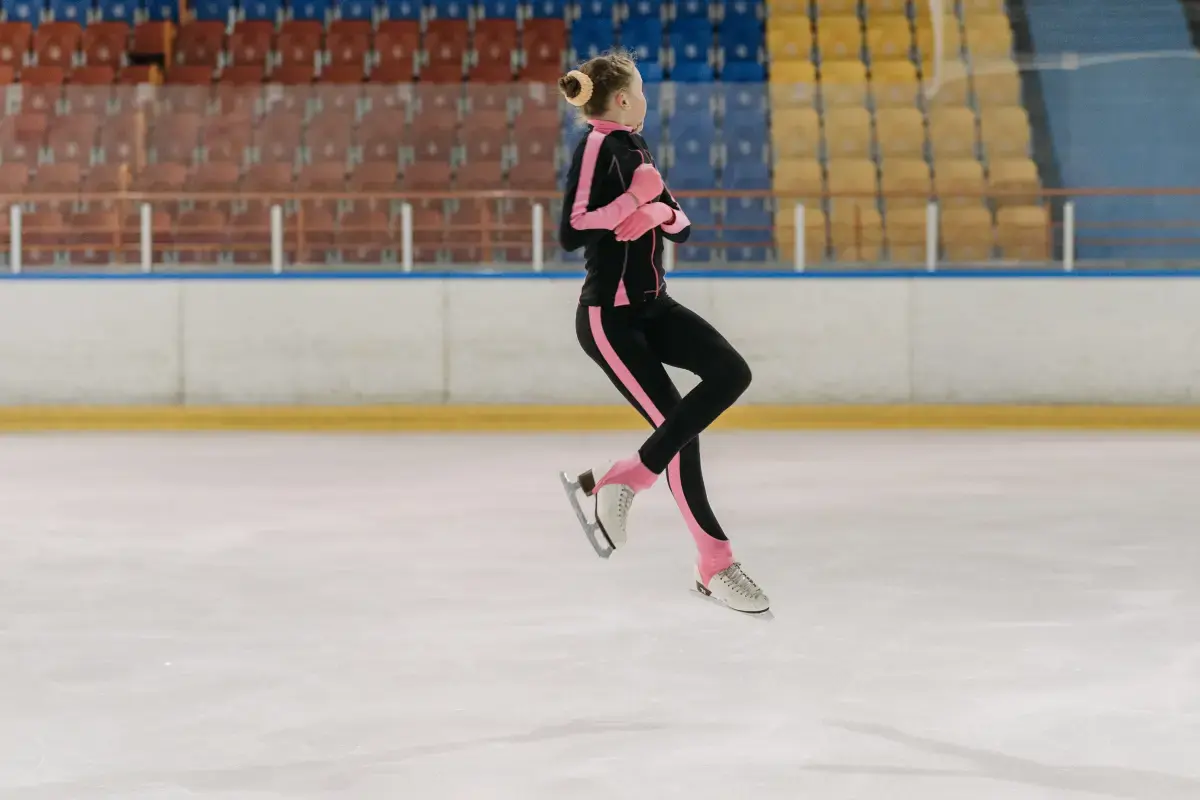Finding balance on the ice can be tricky when you’re first starting out, but it’s a skill that makes all the difference in how comfortable and confident you feel skating. Building a solid foundation of balance can turn wobbly steps into smooth glides and keep you feeling stable on your skates. Whether you’re new to the rink or looking to brush up on the basics, here are five essential tips for improving your balance on ice skates as a beginner.
1. Start with the Right Stance
The foundation of good balance on ice skates begins with your stance. To stabilize yourself on the ice, slightly bend your knees, keep your shoulders forward, and engage your core muscles. This posture, often referred to as the “athletic stance,” places your center of gravity over your feet, which helps maintain stability.
How to Practice the Right Stance:
- Stand with feet hip-width apart.
- Bend your knees slightly, keeping your weight centered.
- Keep your arms out to the sides to help with balance.
Getting comfortable with this stance on and off the ice will make a noticeable difference once you start moving.

2. Engage Your Core Muscles
A strong core is one of the most important assets when it comes to ice skating. Core muscles—such as your abs and lower back—help stabilize your entire body and keep your balance in check. When you engage your core, you’re providing your body with a strong center that helps keep you steady.
Core Strengthening Exercises for Skating:
- Planks: Builds core strength and stability. Try holding for 30 seconds and working up to a minute.
- Side Planks: Strengthens obliques, which help with lateral balance.
- Leg Raises: Focuses on lower abs to improve overall control.
Even doing these exercises a few times a week will improve your balance and give you more control on the ice.
3. Focus on Your Weight Distribution
Finding the right balance often comes down to how your weight is distributed over the blades. A common mistake beginners make is leaning too far forward or backward, which leads to losing balance. Aim to keep your weight centered, directly over the middle of the blade. When standing, avoid placing too much pressure on your toes or heels; try to feel the center of the blade under your foot.
Balance Drills for Weight Distribution:
- Single Leg Balance: Stand on one foot and focus on distributing your weight evenly. This drill can be done on the floor or on the ice to help build stability.
- Rocking Back and Forth: While on the ice, gently shift your weight from heels to toes to understand where your balance point lies.
Practicing this skill will help you avoid accidental falls and feel more secure as you glide.
4. Practice Gliding on Both Feet
Gliding is an essential skill in ice skating and a great way to practice balance. Rather than trying to push yourself too quickly, start by working on gliding with both feet on the ice. Gliding allows you to experience the feel of the ice under your skates and helps you understand how small adjustments in posture affect your stability.
How to Practice Two-Foot Gliding:
- Begin with your knees slightly bent and your feet hip-width apart.
- Push off gently with one foot and bring both feet together.
- Maintain the proper stance and focus on staying balanced as you glide forward.
As you practice gliding, you’ll find that each small improvement in balance makes you more comfortable and confident on the ice.
5. Use Small Steps and Stay Relaxed
One of the biggest challenges for beginners is the instinct to tense up, which actually makes balance harder to maintain. Instead, take small, relaxed steps on the ice and avoid locking your joints. Staying loose allows you to adapt quickly to changes in movement or surface texture and keeps you in control.
Tips for Staying Relaxed on the Ice:
- Take a few deep breaths before you start to help calm any nerves.
- Focus on keeping your shoulders, arms, and hands relaxed.
- Practice small, shuffling steps to get used to the feel of the ice.
Being relaxed helps you move more fluidly and gives you better control, making it easier to maintain your balance.

Conclusion
Improving your balance on ice skates takes practice, but with the right techniques, you’ll feel more stable and confident every time you step onto the rink. By focusing on the right stance, engaging your core, learning proper weight distribution, practicing two-foot gliding, and staying relaxed, you’ll build a strong foundation that will make every skating session more enjoyable. Remember, every skater started as a beginner, so keep practicing, be patient, and soon enough, balance on the ice will come naturally. Enjoy the journey and have fun gliding!

Welcome to Bronxville Skating Club
